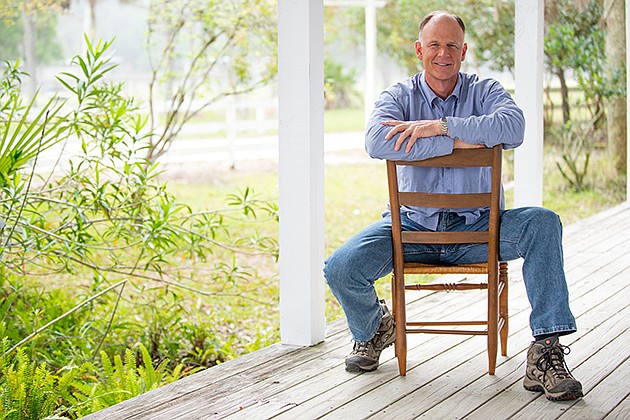In 2007, when the Business Observer celebrated its 10th anniversary, we asked 10 business leaders from Tampa to Naples to look into the future. From retail and health care to philanthropy and, of course, real estate and development, these big hitters opined about what their industry, business, or in the case of University of South Florida President Judy Genshaft, their school, would look like in a decade.
This is a look back at some of those projections and predictions. But more significantly, it's also a look forward another 10 years. And just as in 2007 — no one really knew the danger that lurked around the corner back then — these executives are, for the most part, upbeat and positive about the future.

Judy Genshaft, President, USF
In a letter to the future she wrote in 2007, Genshaft made several accurate projections, most notably that by 2017 the Tampa-based school would be “recognized as a premier metropolitan research university.”
USF, among other accomplishments, is now the ninth-largest public research university in the country and a top 25 public research university as ranked by the National Science Foundation. That puts it up there with schools such as the University of Michigan and the University of Florida.
“We have really come a long way,” Genshaft says in a recent interview. “Our strategic plan is laser-focused and has taken us where we were and will take us where we want to go.”
On a personal level, Genshaft, 69, is in a unique spot at the helm of USF: She's going on year 17 as school president — rare longevity in academia, where the average college president makes it about five years. When big-time athletics are involved, like they are at USF, the job can be more perilous. Genshaft remains energized by USF's students, faculty and staff, whom she says have the right combination of “high energy and a strong worth ethic.”
One of Genshaft's goals for USF in the next decade is to drive the school toward new levels of branding and notoriety. “I want the rest of the world to know about USF,” Genshaft says. “When you hear USF, you will know that it's in Tampa, and you will know that we are a pre-eminent university.”

Rex Jensen, President and CEO, Schroeder-Manatee Ranch
There's one word that can neatly sum up the past decade for Lakewood Ranch developer Schroeder-Manatee Ranch: resiliency.
“We've never had a worse economic period,” says Jensen, who started at Schroeder-Manatee Ranch in 1990 as vice president of planning and is now CEO. “But we've really come out of it with a flourish.”
The recession that crushed the housing industry was devastating to SMR, a pioneer in master-planned communities in Florida and nationwide. In total, Lakewood Ranch, with a territory that goes into north Sarasota and east Manatee counties, has more than 10,000 homes and some 2 million square feet of office space. Planning for Lakewood Ranch dates back to at least 1980, and the first model home opened in 1995.
One element of the community Jensen talked about in 2007, a sports arena and entertainment complex, never got built. But housing, and several parts of the retail and commercial components, have started to blossom post-recession. And Jensen says the next four to five years will be big for Lakewood Ranch. “My main thrust will be to bring the infrastructure together,” Jensen says.
That's a far-wielding thrust. It includes 15 miles' worth of roads, plus the sewage, water and electrical that goes with that. It also includes land for new schools and fire stations, in addition to at least three new Publix locations, an industrial park and more retail and office space. And the march into building homes and apartments will be in full-throttle in Sarasota County, which until now has been only commercial.
Barring any major economic downturn, Jensen says SMR is in a prime spot for the next decade. Says Jensen: “I don't think we're about to let anything slip.”

Syd Kitson, Developer, Babcock Ranch
Babcock Ranch, a massive master-planned community on the Lee-Charlotte county line, was just a baby in 2007.
The developer behind the project, Syd Kitson, closed on the land deal for Babcock Ranch in 2006. It included nearly 18,000 acres, where Kitson & Partners planned to create essentially a new town, with up to 19,500 homes, schools and 50 miles of nature trails. The plans also called for a 21st century twist: a solar plant within the town that will provide all the necessary power.
A decade later Babcock Ranch, says Kitson, is on target to deliver many of its promises. “We are doing everything we said we would and more,” says Kitson. “And that surprises me.”
The key to surviving the recession, Kitson says looking back, is a combination of luck and patience, with an emphasis on the latter. With luck, Kitson says if the complicated land deal was completed earlier in the 2000s, then construction could have started in say, 2006. That would have been a killer, given the pending housing market collapse.
On the other side, Kitson says the strategy was always to preach patience, a move that looked prescient in the downturn. The bulk of the $300 million investment in Babcock Ranch comes from bonds backed by Kitson & Partners and Evergreen Real Estate Partners, the real estate investment arm of Chicago-based M3 Capital Partners. That investment will carry the project through 2019, according to bond documents.
And that investment also paid off last year, when construction began on model homes, a school and a village center. “We have long-term patient capital,” says Kitson. “We have no bank debt and very little bond debt. That's very important.”

Steve Knopik, CEO, Bealls
The past decade in the retail industry was so nutty that calling it a massive upheaval might be a bit of understatement.
The pile of national retailers that have struggled, been sold or simply closed is deep and wide. That's from both the recession, and more recently, the dramatic shift to online shopping. Knopik, in 2007, says he thought e-commerce would grow — but not like this.
“My comments on e-commerce were based on the notion that I didn't believe people we're ready to buy online as fast as they have,” says Knopik, named CEO of Bradenton-based Bealls in 2006. “I had always believed that people would want to feel, touch and try on. I didn't get that quite right.
“I didn't see the profound challenges department stores are facing,” he says.
Many more changes are forthcoming in the next decade of retail, Knopik projects. For one, mobile purchases, he says, will continue to grow rapidly, and coming soon will be more voice-activated purchases, through devices and smartphones. Logistics, with drones and driverless cars, is also on the cusp of a major shift, says Knopik. And technology will play an even larger role in the actual merchandise, he predicts, with new kinds of performance-based apparel.
Bealls, with $1.4 billion in sales in 2015, was founded in 1915, so surviving industry shifts is nothing new. “Technology is just going to continue to change how people live,” Knopik says, “and retailers like Bealls will have to continue to learn how to harness these things.”

Trudi Williams, CEO, TKW Consulting Engineers and former Florida state representative
Even as far back as 2007, Williams saw the slowdown coming — if not how deep and long it would last.
“We built and developed so much and so quickly that we could not keep up with the infrastructure needs to accommodate this growth,” she wrote for the 2007 issue. “So now is the time to narrow the gap between growth and infrastructure needs.”
One of those infrastructure projects, a road extension to Southwest Florida International Airport from Interstate 75 in Fort Myers, was completed. It has since keyed post-recession growth in the commercial and retail areas around the airport, says Williams. “People thought there would never be direct access to the airport in Fort Myers from I-75,” Williams says in a recent interview, “but that's now been accomplished.”
A statewide issue Williams is passionate about is water, both quality and conservation of lakes and rivers. She works on many water-related issues at her consulting firm.
Williams, a Republican, also served four terms in the Florida House, where she was chairwoman of the committee on environmental protection. Before the state House, Williams was chairwoman of the South Florida Water Management District.
In 2007, Williams projected that “within the next decade, we will get the water right.”
But despite her efforts, in and out of Tallahassee, water issues linger.
In Southwest Florida, the issue centers on the quality of the water that discharges from Lake Okeechobee into the Fort Myers area. Williams says those problems could be solved, but first there must be a winner in the ongoing dispute about which agency should control the water flow — the federal government through the U.S. Army Corps of Engineers or Florida through the South Florida Water Management District.
Williams is optimistic about the future of the water issue, but unsure of a timetable. “My solution would be to go to the federal government and let them know Florida should control its own water,” says Williams. “Ultimately that would change everything.”











